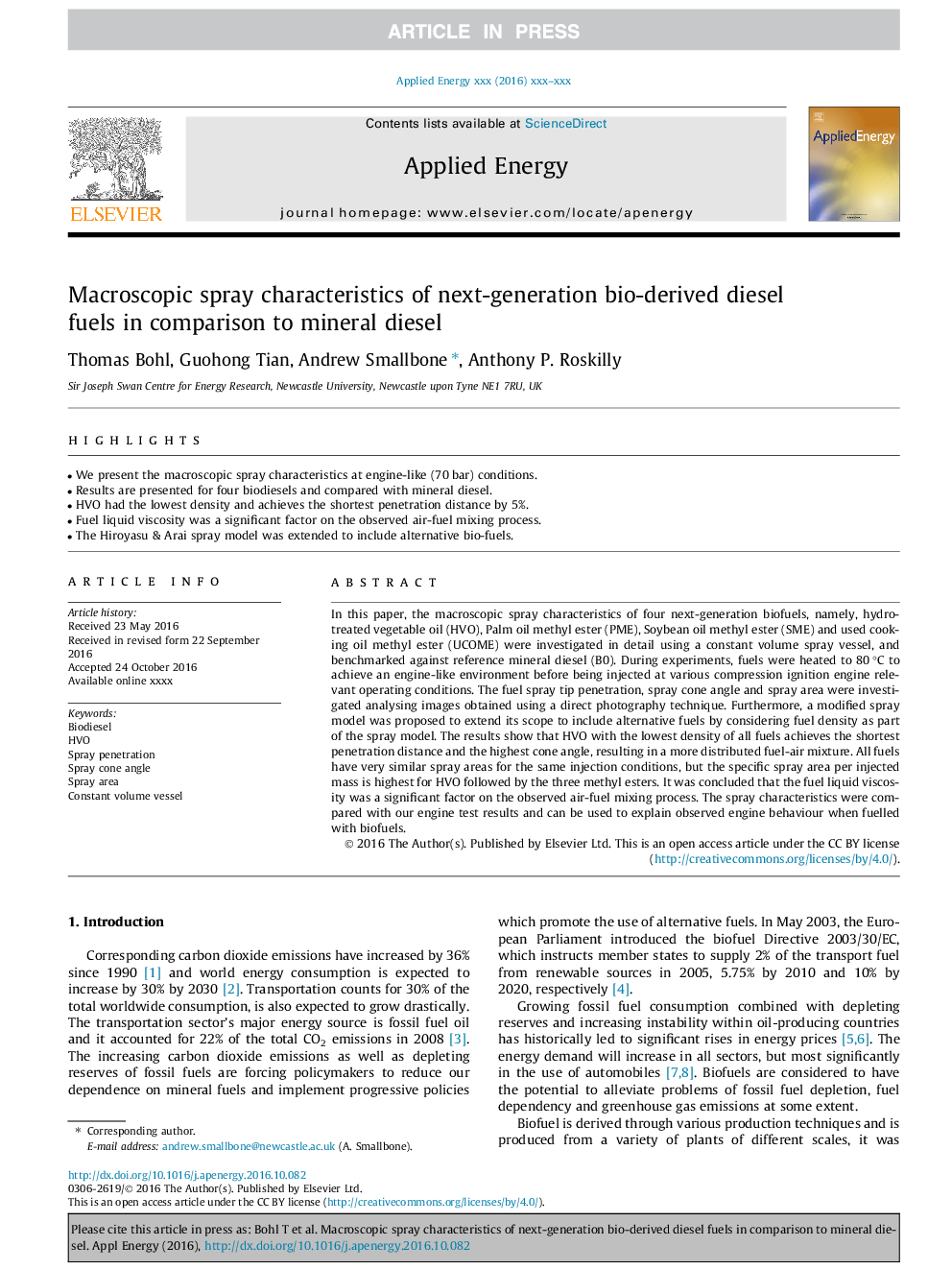| کد مقاله | کد نشریه | سال انتشار | مقاله انگلیسی | نسخه تمام متن |
|---|---|---|---|---|
| 4916821 | 1362735 | 2017 | 12 صفحه PDF | دانلود رایگان |
عنوان انگلیسی مقاله ISI
Macroscopic spray characteristics of next-generation bio-derived diesel fuels in comparison to mineral diesel
ترجمه فارسی عنوان
ویژگی های اسپری های مکروسکوپی سوخت های دیزلی نسل بعدی در مقایسه با دیزل معدنی
دانلود مقاله + سفارش ترجمه
دانلود مقاله ISI انگلیسی
رایگان برای ایرانیان
کلمات کلیدی
موضوعات مرتبط
مهندسی و علوم پایه
مهندسی انرژی
مهندسی انرژی و فناوری های برق
چکیده انگلیسی
In this paper, the macroscopic spray characteristics of four next-generation biofuels, namely, hydrotreated vegetable oil (HVO), Palm oil methyl ester (PME), Soybean oil methyl ester (SME) and used cooking oil methyl ester (UCOME) were investigated in detail using a constant volume spray vessel, and benchmarked against reference mineral diesel (B0). During experiments, fuels were heated to 80 °C to achieve an engine-like environment before being injected at various compression ignition engine relevant operating conditions. The fuel spray tip penetration, spray cone angle and spray area were investigated analysing images obtained using a direct photography technique. Furthermore, a modified spray model was proposed to extend its scope to include alternative fuels by considering fuel density as part of the spray model. The results show that HVO with the lowest density of all fuels achieves the shortest penetration distance and the highest cone angle, resulting in a more distributed fuel-air mixture. All fuels have very similar spray areas for the same injection conditions, but the specific spray area per injected mass is highest for HVO followed by the three methyl esters. It was concluded that the fuel liquid viscosity was a significant factor on the observed air-fuel mixing process. The spray characteristics were compared with our engine test results and can be used to explain observed engine behaviour when fuelled with biofuels.
ناشر
Database: Elsevier - ScienceDirect (ساینس دایرکت)
Journal: Applied Energy - Volume 186, Part 3, 15 January 2017, Pages 562-573
Journal: Applied Energy - Volume 186, Part 3, 15 January 2017, Pages 562-573
نویسندگان
Thomas Bohl, Guohong Tian, Andrew Smallbone, Anthony P. Roskilly,
